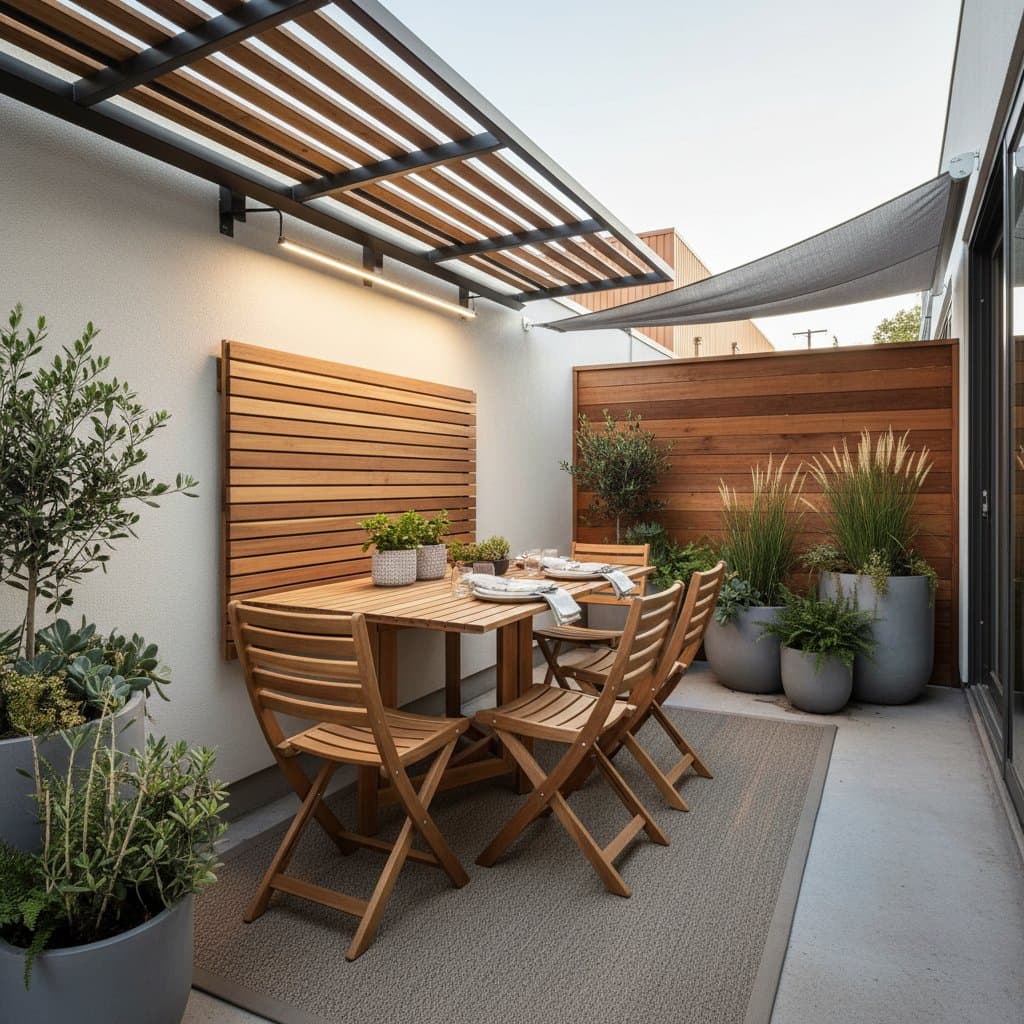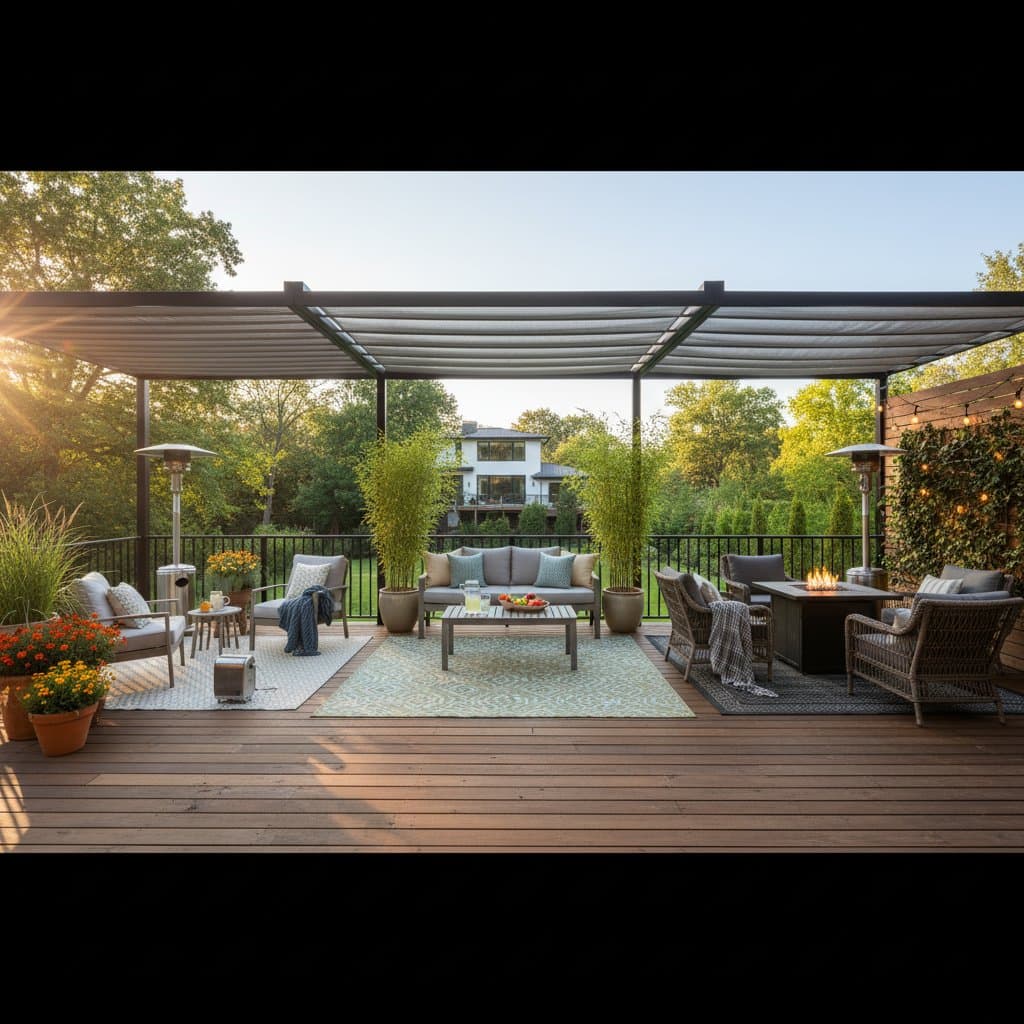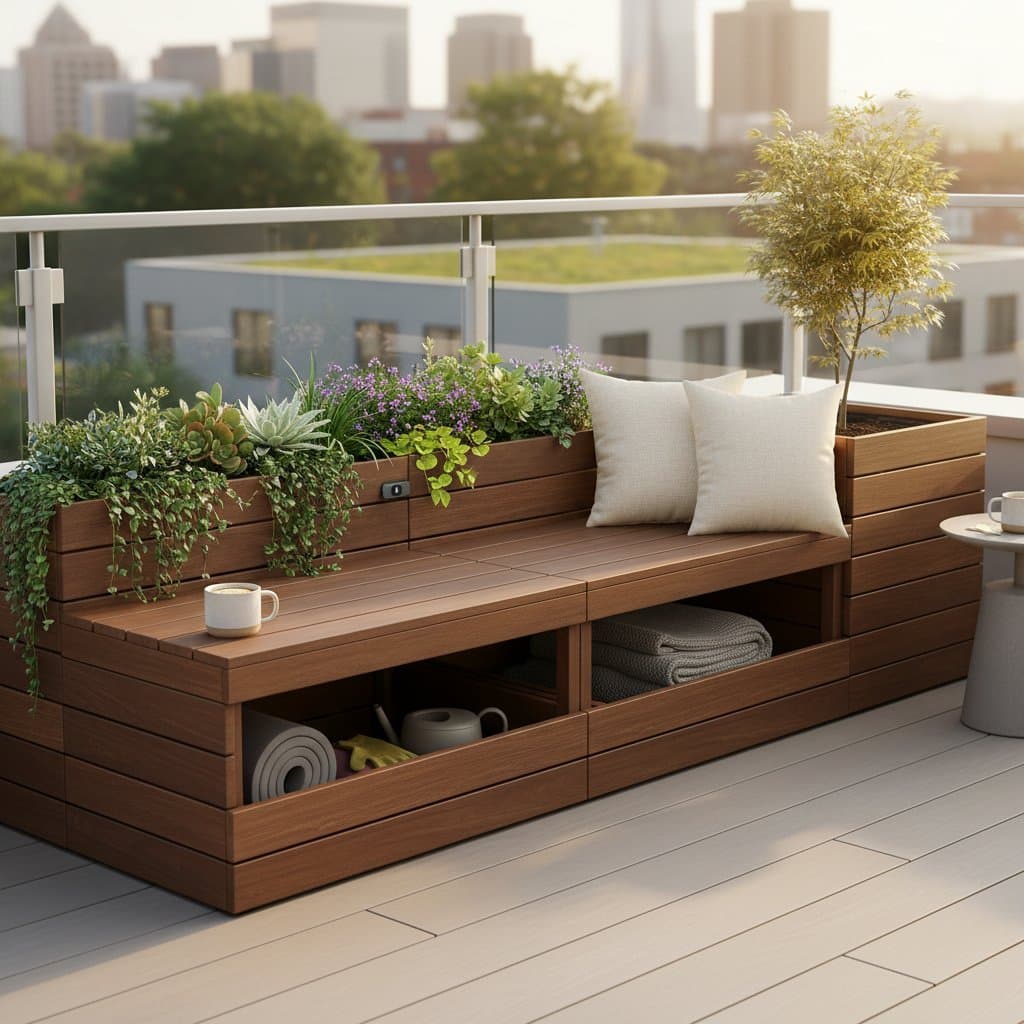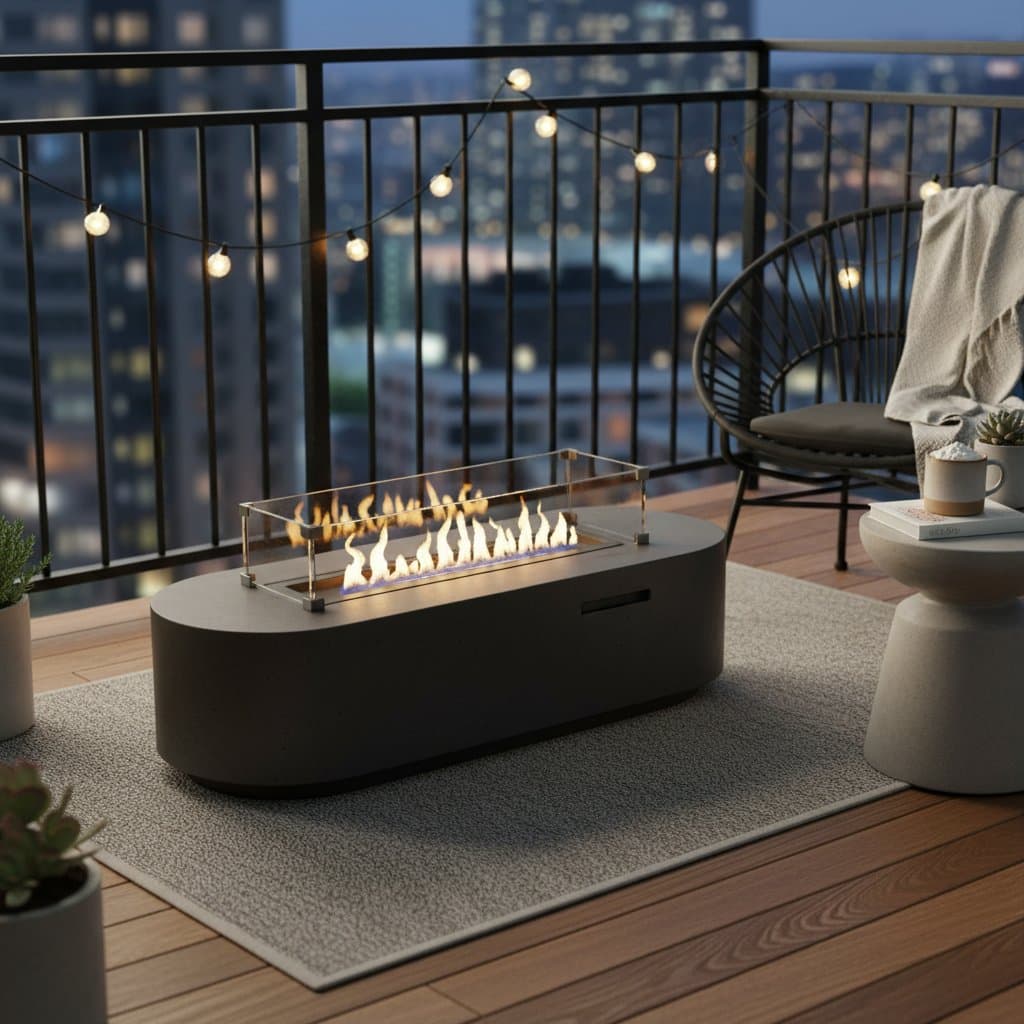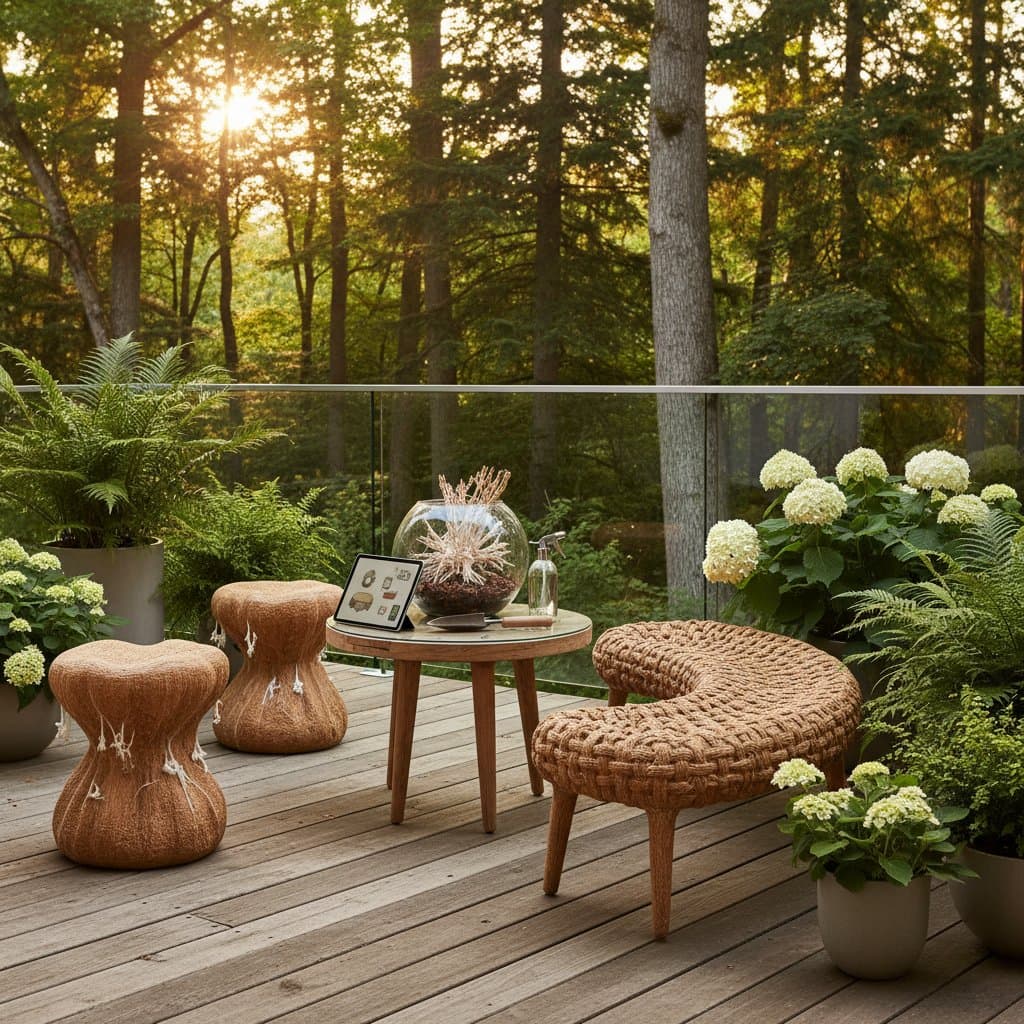Step 4: Select and Integrate Seating Options
Choose seating that complements the fold-away table while preserving patio versatility. Opt for chairs that fold completely flat or stack to a maximum height of 4 inches (10 cm) to minimize storage footprint. Metal bistro chairs offer lightweight durability and quick folding, while sling-back designs provide comfort with breathable fabric slings that resist weathering.
Consider the number of chairs based on your typical gathering size, starting with two for intimate meals and expanding to four for occasional guests. Position them to allow easy access when the table deploys, ensuring at least 24 inches (61 cm) of clearance around the setup. Protect these pieces by storing them under a weatherproof cover or in a dedicated outdoor cabinet during periods of disuse, which helps prevent fading, rust, or fabric degradation over time.
Step 5: Apply Protective Finishes
Preserve the longevity of your fold-away dining setup through proper sealing and protection. For wooden elements, apply a high-quality, water-resistant sealant annually or after exposure to heavy moisture; this creates a barrier against rot and warping. Select a product formulated for outdoor use, such as a UV-protectant polyurethane, and follow the manufacturer's instructions for even application.
Metal components require attention to prevent corrosion. Spray rust-inhibiting treatments on frames and joints every season, focusing on areas prone to water accumulation like hinges and brackets. Allow each coat to dry thoroughly for at least 24 hours before exposing the furniture to the elements, ensuring a robust defense against environmental wear.
Step 6: Conduct Thorough Testing and Fine-Tuning
Verify the functionality of your installation by operating the table through multiple open-and-close cycles. This process reveals any friction in the mechanisms or instability in the mounting. If the table exhibits wobbling, inspect and tighten all hinges and brackets, or consider upgrading to reinforced hardware capable of supporting additional weight.
Assess user comfort by simulating real use: sit at the table, extend arms to reach across, and confirm adequate legroom of at least 18 inches (46 cm) per person. Adjust chair positions or table height if necessary to optimize ergonomics. Document any adjustments made, as this aids in future maintenance and ensures the setup remains reliable for daily enjoyment.
Essential Safety Guidelines
Prioritize safety to enjoy your fold-away dining area without risks. Inspect all hinges, screws, and anchors monthly to confirm they remain secure; loose fittings can lead to accidents during use. Refrain from applying weight to the table while it is in the folded position, as this may damage the structure or cause it to collapse unexpectedly.
Maintain clear zones around moving parts by routing electrical cords or decorative string lights away from folding areas, reducing the chance of pinching or tripping hazards. Adhere strictly to the manufacturer's specified load capacity, typically ranging from 50 to 100 pounds (23 to 45 kg) for most models, to avoid overloading. Install slip-resistant pads beneath chair legs to enhance stability on smooth surfaces like tile or composite decking, preventing slips during meals or gatherings.
Common Issues and Resolutions
Address potential problems promptly to sustain the performance of your setup. If the table surface sags when fully extended, begin by tightening all hinge screws with an appropriate tool; if the issue persists, replace the brackets with heavy-duty alternatives rated for at least 75 pounds (34 kg) of distributed weight.
Warping or cracking on wooden surfaces often results from prolonged moisture exposure. Counter this by reapplying sealant promptly and relocating the table to a sheltered position during rainstorms. Employ a fitted table cover made from breathable, waterproof material to shield it further, allowing air circulation while blocking direct precipitation.
For chairs showing signs of rust or color fading, prepare the surface by lightly sanding affected areas to remove oxidation, then apply a fresh coat of outdoor-grade enamel paint. Store folded chairs in a dry, ventilated space to halt further deterioration, and consider adding protective sleeves for fabric elements to guard against UV damage.
Routine Maintenance Practices
Fold-away dining systems benefit from consistent, straightforward upkeep that prevents wear and extends usability. Clean surfaces weekly using a solution of mild soap and water, applied with a soft cloth to avoid scratching finishes; rinse thoroughly and dry immediately to eliminate residue buildup.
Examine hinges and moving parts every two to three months, applying a silicone-based lubricant to ensure smooth operation and reduce squeaking. Tighten any loosened hardware during these checks, using thread-locking compound on screws for added security. Wooden tables demand annual resealing, ideally in early spring, to fortify against seasonal humidity fluctuations and prevent splintering or discoloration.
Protect cushions and fabric-covered seats by storing them indoors during inclement weather, which mitigates mildew growth and fabric breakdown. Utilize a deck storage box lined with a vapor-permeable moisture barrier at the base to keep stored items dry and free from condensation, preserving their condition for repeated use.
Efficient Storage Strategies
Proper storage keeps your fold-away components compact and protected when not in active use. Position the folded table and chairs flush against a wall or beneath an overhanging eave to free up floor space for other activities. Install wall-mounted hooks or adjustable brackets to hang chairs vertically, maximizing vertical storage without obstructing walkways.
In regions with high humidity, incorporate small desiccant packets within storage containers to absorb excess moisture and prevent mold. Elevate all items off the ground using racks or pallets to avoid contact with standing water after rain, which could accelerate rust or rot. Perform a quick inspection post-rainfall: unfold and air-dry the furniture fully before refolding to eliminate trapped dampness and maintain structural integrity.
Cost and Installation Timeline Overview
Fold-away dining setups accommodate various budgets and time commitments, making them accessible for urban dwellers. Entry-level configurations, such as a portable bistro table paired with two basic folding chairs, range from $100 to $200 and require only one hour for assembly and placement.
Mid-tier options, including a wall-mounted drop-leaf table with matching chairs, cost between $250 and $400 and involve a two-hour setup process, often needing basic tools for secure mounting. Premium selections, like custom metal-framed systems with integrated storage, fall in the $500 to $900 range and may demand a half-day for professional-level installation to ensure precision.
Ongoing maintenance expenses remain minimal, limited to sealants, lubricants, and occasional hardware replacements once or twice yearly. Should you engage a carpenter for wall mounting or custom work, budget an additional $75 to $150, factoring in material complexity and site accessibility for a flawless result.
Seasonal Care Schedule
Adapt your maintenance routine to seasonal changes for optimal furniture performance. In spring, perform a deep clean, reseal wooden surfaces, and verify bracket integrity to prepare for increased outdoor activity.
During summer, position furniture in shaded areas when idle and conduct regular rust inspections to combat heat and sun exposure. As fall arrives, dry items thoroughly after each rain, fold them securely, and store cushions indoors to protect against cooling temperatures and debris.
Winter preparation involves folding and securing the entire setup indoors or under heavy-duty covers to shield from frost and snow accumulation. This cyclical approach ensures your patio remains functional throughout the year, minimizing repairs and maximizing enjoyment.
Professional Assistance Indicators
Recognize when expert help ensures safety and compliance. Seek a professional for any wall or railing structural concerns, or if the setup routinely supports over 50 pounds (23 kg), such as with added decor or multiple users. A licensed carpenter or handyman can evaluate anchor points, confirm load-bearing capacity, and install reinforcements as needed.
Renters should consult property managers prior to any drilling or permanent modifications; they might recommend adhesive-mounted or freestanding alternatives to preserve the space. Professional input not only enhances durability but also aligns with local building codes for peace of mind.
Core Benefits and Implementation
Fold-away dining redefines small patios as dynamic extensions of living space, enabling seamless transitions between dining and relaxation. Precise measurements and selection of weather-resistant materials form the foundation for a setup that withstands urban elements.
Secure mounting and periodic inspections underpin safety, while uncomplicated maintenance routines sustain appearance and function. Options span budgets and skill levels, from simple assemblies to tailored installations, offering flexibility for every lifestyle.
This approach integrates practicality with aesthetic appeal, allowing city residents to savor outdoor meals without compromising on space. With thoughtful planning, your patio evolves into a multifunctional haven ready for daily use and seasonal shifts.
Actionable Implementation Guide
- Measure your patio dimensions, identifying wall space and clearance for the fold-away mechanism.
- Choose components with robust, outdoor-rated materials and dependable hardware.
- Install with premium anchors, ensuring unobstructed pathways and rigorous stability tests.
- Establish a maintenance calendar for cleaning, sealing, and hardware checks.
- Utilize the space for dining, lounging, or gatherings, folding away to reclaim the area effortlessly.
Investing a few hours in this setup yields lasting rewards: a patio that feels expansive, purposeful, and attuned to your needs across all seasons.
